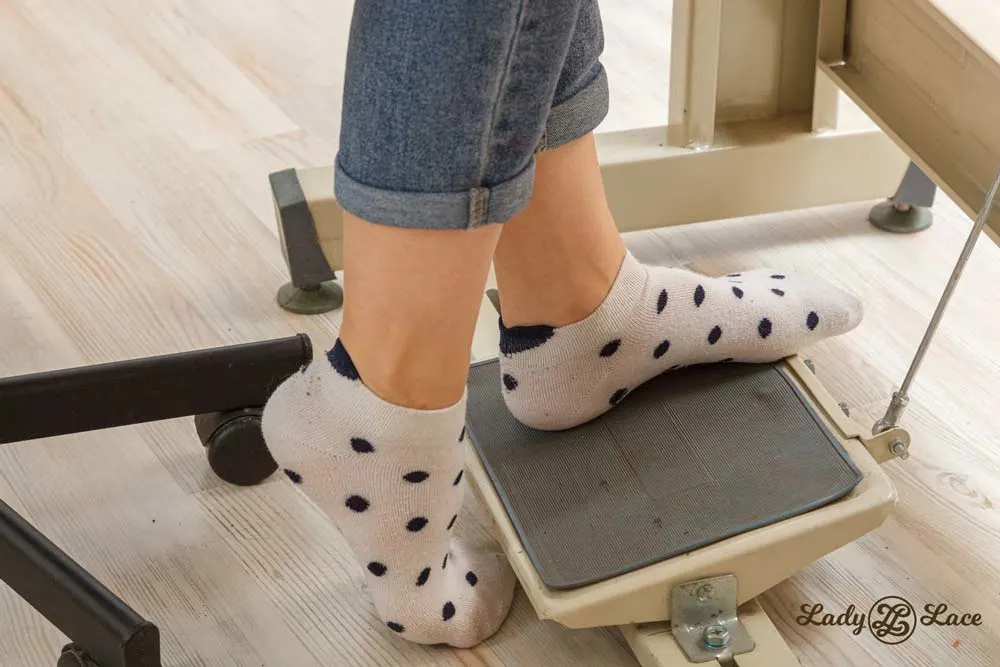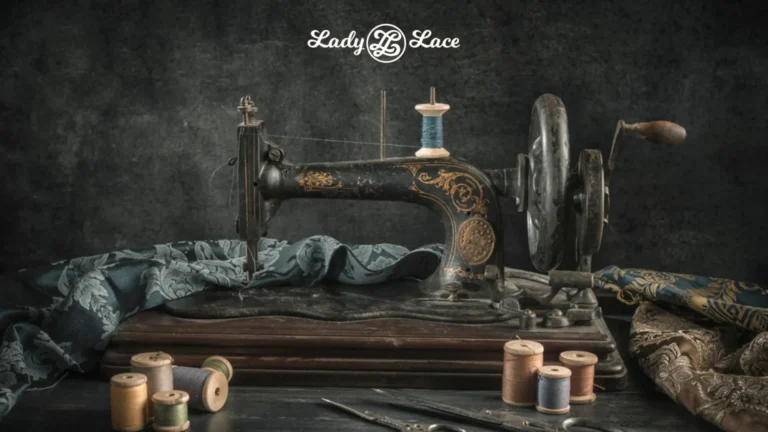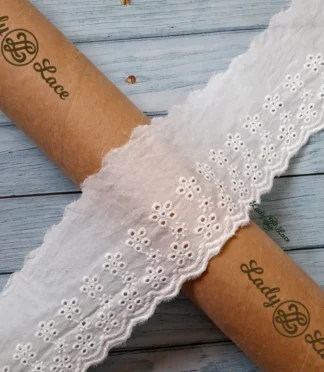A sewing machine foot pedal is your best friend when it comes to controlling the speed and flow of your stitches. Whether you’re a beginner or brushing up on your skills, understanding how to use the foot pedal correctly can make a big difference in your sewing experience.
An essential component of every sewing machine is the foot pedal. Your hands are free to guide the cloth and make stitches since you can control the machine’s speed with your foot.
Utilizing the foot pedal may appear difficult at first if you are new to sewing. You will be able to control the speed of your machine like a pro with a little bit of experience, though.
Using the Foot Pedal
Put your foot on the foot pedal and depress it to operate it. The sewing machine sews more quickly the harder you press. Simply let up on the pedal to slow down the machine.
Controlling the Speed of the Machine
The amount of pressure you put on the foot pedal affects how quickly your sewing machine operates. The sewing machine sews more quickly when more pressure is applied. The sewing machine will work more slowly the less force you use.
It is crucial to remember that the type of cloth you are sewing with and the type of stitch you are using will both have an impact on the pace of your sewing machine. For instance, thicker materials and stitches will call for a slower stitching speed.
Tips for Using the Foot Pedal
Here are a few tips for using the foot pedal effectively:
- Start by sewing at a slow speed until you get the hang of using the foot pedal.
- Increase the speed of the machine gradually as you become more comfortable.
- Use your hands to guide the fabric and create stitches.
- Do not be afraid to slow down the machine if you need to.
- Practice sewing on a scrap piece of fabric before starting your project.
Troubleshooting Foot Pedal Problems
If you are having problems with your sewing machine foot pedal, there are a few things you can do:
- Check to make sure that the foot pedal is properly plugged into the sewing machine.
- Try using a different foot pedal.
- Clean the foot pedal cord and plug with a dry cloth.
- If you are still having problems, consult your sewing machine manual or contact the manufacturer for assistance.
Advanced Foot Pedal Techniques
You can start learning more complex foot pedal techniques once you have mastered the fundamentals. You can learn how to steer the machine and make different kinds of stitches, for instance, by using the foot pedal.
Here are a few advanced foot pedal techniques to try:
- Pivot stitching: This stitch is created by simply letting go of the foot pedal and turning the fabric in the desired direction. Then, to resume stitching, begin depressing the foot pedal once more.
- Zigzag stitching is accomplished by rhythmically rocking the foot pedal back and forth. On the fabric, this will produce a zigzag stitch pattern.
- Buttonhole stitching: Refer to your sewing machine’s manual for details on how to buttonhole stitch. The majority of sewing machines are equipped with a buttonhole stitching feature.
An essential component of every sewing machine is the foot pedal. You can adjust the speed of your machine and make precise stitches if you can utilize the foot pedal efficiently.
Additional Tips
Here are a few additional tips for using the foot pedal:
- As you stitch curves and turn corners, use your foot pedal to regulate the machine’s speed. This will lessen the likelihood of the fabric puckering.
- Use a light touch on the foot pedal and a modest stitching pace while sewing sensitive fabrics. This will lessen the likelihood of the fabric tearing.
- When you first start sewing, practice on scraps of fabric. This will assist you in learning how to operate the foot pedal and regulate the machine’s speed.
With a little practice, you will be able to control the foot pedal like a pro and create beautiful stitches with ease.












